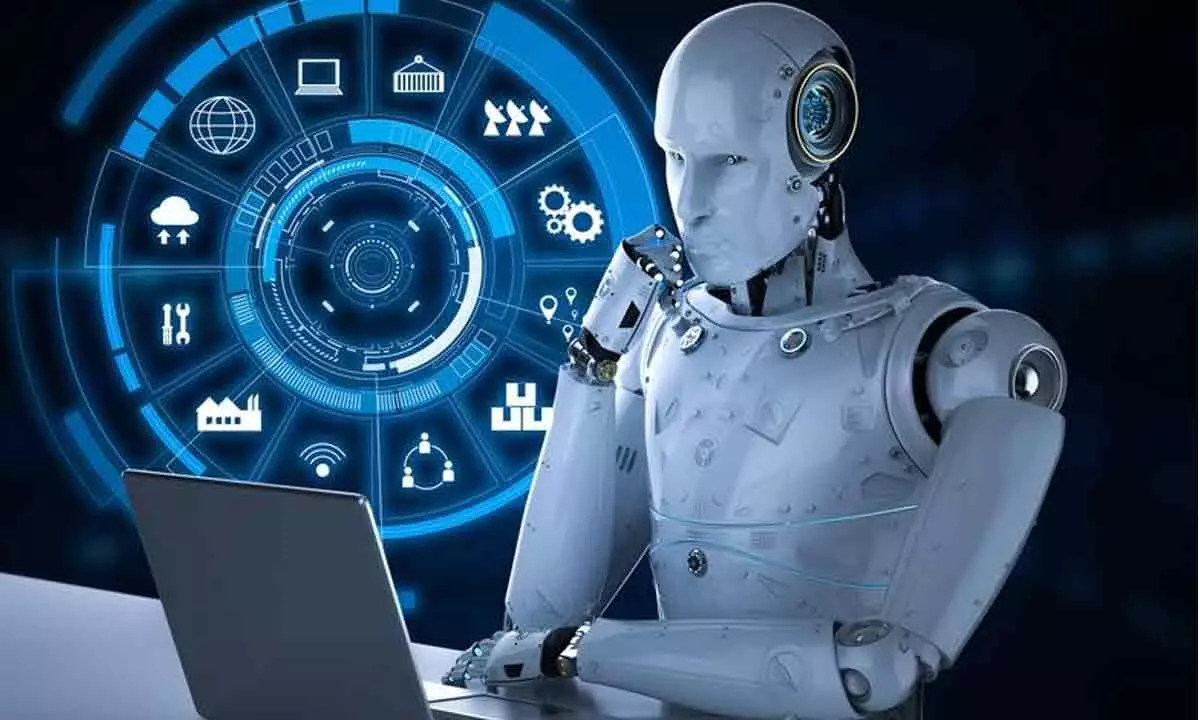ChatGPT was one of the hottest tech stories of 2023, reaching 100 million monthly active users after just a few months and spawning endless op-eds about the “age of AI.” Today, OpenAI’s flagship product boasts a user base of 180 million and attracts a billion web visitors each month.
While many commentators marvel at AI’s evolution and cite ChatGPT’s impressive 100 billion daily word output, the scope of chatbots is rather limited. Sure, they can help to produce reports, write emails, generate code scaffolding, and enact customer service interactions. Still, human-like conversation ability, conveyed via words on a screen, is only helpful in certain industries and for very specific tasks.
Large swathes of the labor market have little use for ChatGPT or chatbots generally. But that doesn’t mean they aren’t leveraging AI in other ways.
AI’s Unstoppable Trajectory
AI-powered robots, for example, are already heavily involved in the automotive industry, particularly in the manufacture of new vehicles. AI, of course, is intrinsically linked to the development of autonomous cars.
Elsewhere in industry, AI-powered predictive maintenance systems can prevent equipment failures, while generative AI can optimize product design in a host of different sectors.
Just last week, Microsoft, Nvidia, and OpenAI were among a long list of investors who participated in a funding round for AI robotics firm Figure, with the $675 million raise giving the company a valuation of $2.6 billion. The California-based Figure is currently working on developing general-purpose, human-like robots that can be deployed commercially – including in factories and warehouses.
Between LLMs, whose specialty is words, and other emerging systems and models with more hands-on ability, AI is on a seemingly unstoppable trajectory. Even when the hype around ChatGPT inevitably subsides, the sheer number of practical use cases and major investments (including those made by governments) flowing into AI projects will ensure the momentum continues.
It is not easy to say which verticals will see the most traction but projects operating at the intersection of AI, robotics and spatial computing are likely to be heavily represented. Goldman Sachs analysts expect the AI-powered humanoid robot market to reach $38 billion by 2035. Spatial computing, meanwhile, is predicted to hit $705 billion by 2033.
How Spatial Computing Brings AI Into the World
Spatial computing has received less media attention than AI, but it’s starting to be recognized as a major innovation. This cutting-edge technology enables machines to better understand their environment and allows humans to interact with computers in meatspace rather than through a screen.
By combining a 3D-centric form of computing (VR, AR, XR, etc) with AI and machine learning, projects working in this field effectively help AI systems gain spatial awareness, interact with the corporeal world, and break free from the strictures of the internet.
By way of an example, let’s consider a ubiquitous tool: the smartphone. It may be clever, but it’s not spatially aware: how many people have walked directly into a streetlight or pedestrian while busy texting? If your device were spatially aware, it could warn you when you get too close to a hazard.
Hazard perception will be one of the key metrics by which self-driving cars are judged. If spatial computing does its job, autonomous vehicles will navigate the roads with aplomb.
Spatial computing isn’t just about teaching technology to understand space. It can also be used to create three-dimensional models of environments over which digital items can be laid. One use case is in housebuilding, where architects can map a property and create life-like designs on a virtual simulacrum of bricks and mortar. Another is retail.
One project called the posemesh is already demonstrating how spatial computing can serve as the foundational layer for AI to gain spatial reasoning. The ambitious protocol facilitates various use cases in sectors like retail and logistics and comprises a decentralized network for collaborative spatial computing, as well as a domain service processing spatio-semantic data about physical spaces. There’s also an SDK developers can use to connect custom apps to the posemesh.
The brain trust, Auki Labs, building the posemesh believes an “AI confined to the internet will be perpetually disappointing.” It’s an assertion that speaks to the limitations of artificial intelligence interfacing solely through a screen. For AI to come bounding out of the computer, however, it needs an enormous amount of sensor data (from cameras, scanners, microphones, wearables, etc) and the underlying architecture to process it all.
The posemesh addresses this need by allowing devices scattered around the world to form ad-hoc distributed spatial computers, where data and compute resources can be moved within the cluster to optimally solve for participants’ economic interests. Powered by blockchain, the posemesh distributes rewards to participants based on metrics such as data served, sessions hosted, and response time. Network service operators, meanwhile, can stake the protocol’s native token to establish a reputation that can be slashed if they fail to maintain the protocol’s uptime standards.
Debates often rage about artificial general intelligence (AGI), and they mostly center on whether it’s a goal we should even risk trying to achieve (we’ve all seen Terminator 2). But a more obvious staging post on AI’s revolutionary journey concerns its ability to reason spatially, not intellectually: to understand depth, identify danger and move accordingly.
We aren’t there yet. But projects like the posemesh and others are bringing the future into clearer focus. Now, what would ChatGPT have to say about that?

